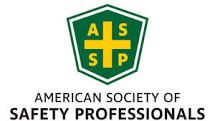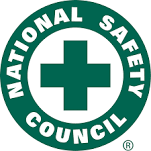Connecting the Dots: Safety and Profitability
The most efficient weight-loss book would have only two chapters, each with one sentence: Chapter One – “Eat less.” Chapter Two – “Exercise more.” There’d be a similar book for improving your company’s health: Chapter One – “Reduce costs.” Chapter Two – “Increase revenues.” This article hopes to make a case for the financial benefits of implementing a rigorous safety culture – a commitment that can both reduce costs and increase revenues.
The first and most obvious area where cost savings can be achieved is with Workers Compensation insurance. Many business owners don’t realize how much control they have over their experience modification rate (EMR or Mod Rate), which is used to adjust the “book rate” for Workers Comp premiums. A company’s EMR is based on how its claims experience compares to industry averages in its classifications, with a 1.0 rating representing the average. “Insurance costs are controllable costs – they’re not a fixed expense,” says Mark Oldham, CSP, an executive consultant in risk management for Fireman’s Fund. Insurance is a significant percentage of the overall cost of business (just add up your Workers Comp, liability, automobile, property, inland marine, umbrella, professional liability, and employee benefits). “It’ll have a disproportionate impact when costs can be lowered,” states Oldham. “Insurance trades fixed costs for unknown costs, and premiums are directly influenced by prior experience and control over operations.”
In fact, Workers Comp operates like a line of credit, where the insurer spreads the cost of a company’s predicted future losses over time, meaning that premiums are in essence just a way of financing a company’s cost of accidents and injuries. So, obviously if a company can reduce its claims over time, it will reduce its cost of business. This can translate to a measurable effect on the bottom line. The example below illustrates the difference in premiums between a .80 EMR and a 1.20 EMR for just one of a contractor’s job classifications:
Modifiers are also applied to a company’s general liability and auto insurance, but the EMR is a key indicator of a company’s performance. Oldham says, “It’s used as a litmus test of how you run your business. If you can’t work safely, you can’t produce a quality product.” Many insurance carriers will meet with a prospective client before offering a quote, and perform a loss control survey to gather information on its operations. This will assist the underwriters in understanding what the company does and how well it does it, and can have a direct bearing on cost. Underwriters make empirical decisions based on these tangible factors to determine debits and credits against the book rate. The carriers will also advise the client on how to control losses, identify risks, and develop appropriate action plans and follow up properly.
Fireman’s Fund also provides its clients with post-loss consulting services if warranted. They will help prepare a mutual action plan with specific objectives and timelines for the risk consultant and the client – then execute the plan in concert. At the conclusion, the desired reduction in hazards and risk factors should be clear enough for the client to give an “as a result” statement. If it can’t, the plan was merely a series of activities rather than a strategic effort.
For those contractors that don’t have a full-time safety department (or even those that do), Oldham suggests taking advantage of the many services that insurance carriers offer, such as subscriber-only content on their web sites with training programs, educational resources, topics for safety meetings, and so on.
Oldham emphasizes that successful companies are engaged. There’s an awareness of the true costs of risk, an understanding of what drives risk, and mechanisms to control the cost of risk (such as diligent hiring practices, strong training programs, aggressive injury investigation and correction efforts, and claims management like bringing injured employees back to work ASAP). When Fireman’s Fund performs a loss control survey, Oldham says that they look for employers who “get it.” These are companies that don’t just focus on the cost of insurance premiums. They understand that accidents and injuries affect their other business costs (such as the state unemployment compensation billing, which increases with the turnover rate); and they understand why.







